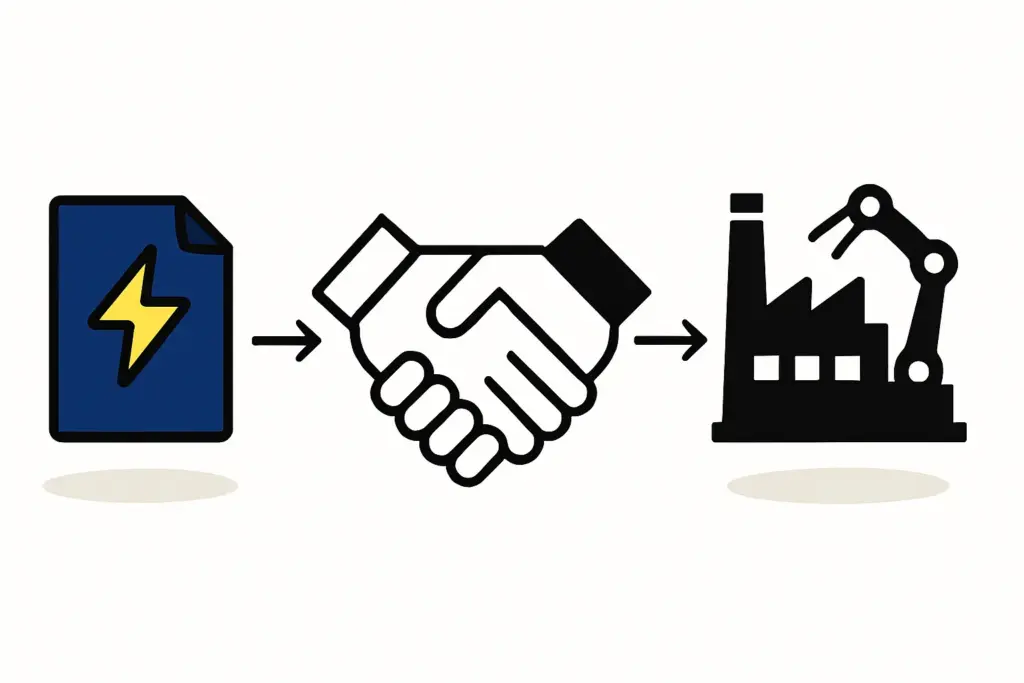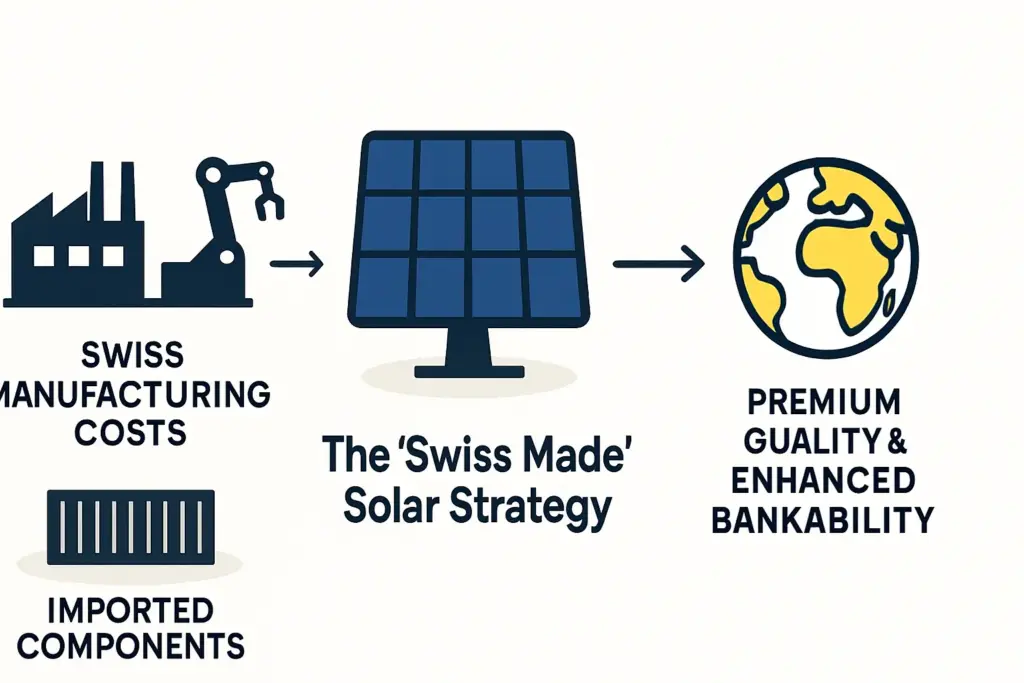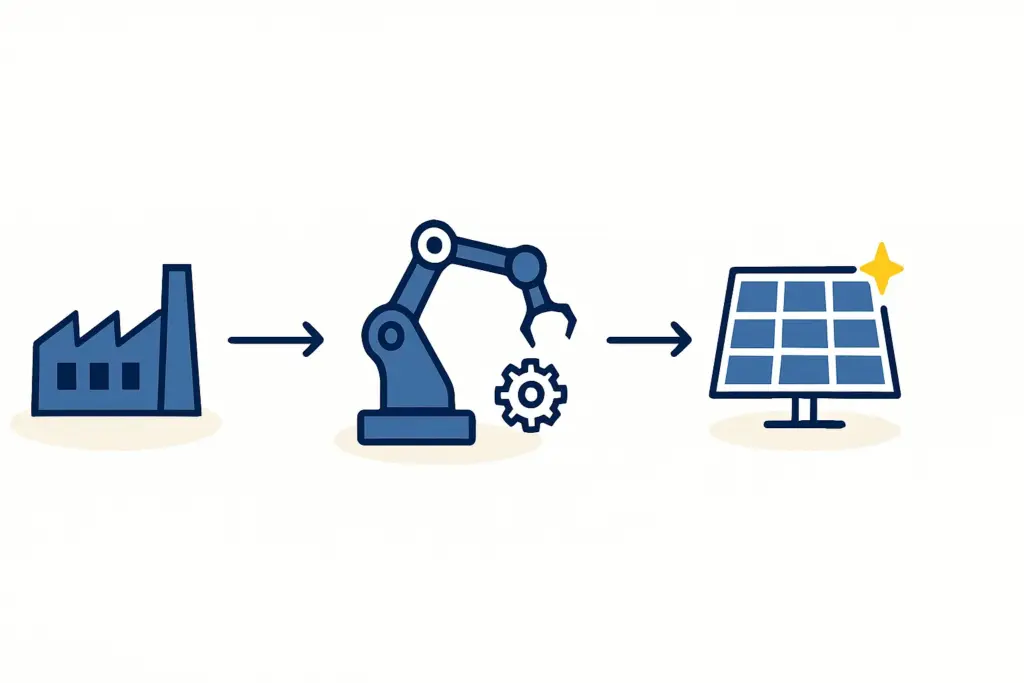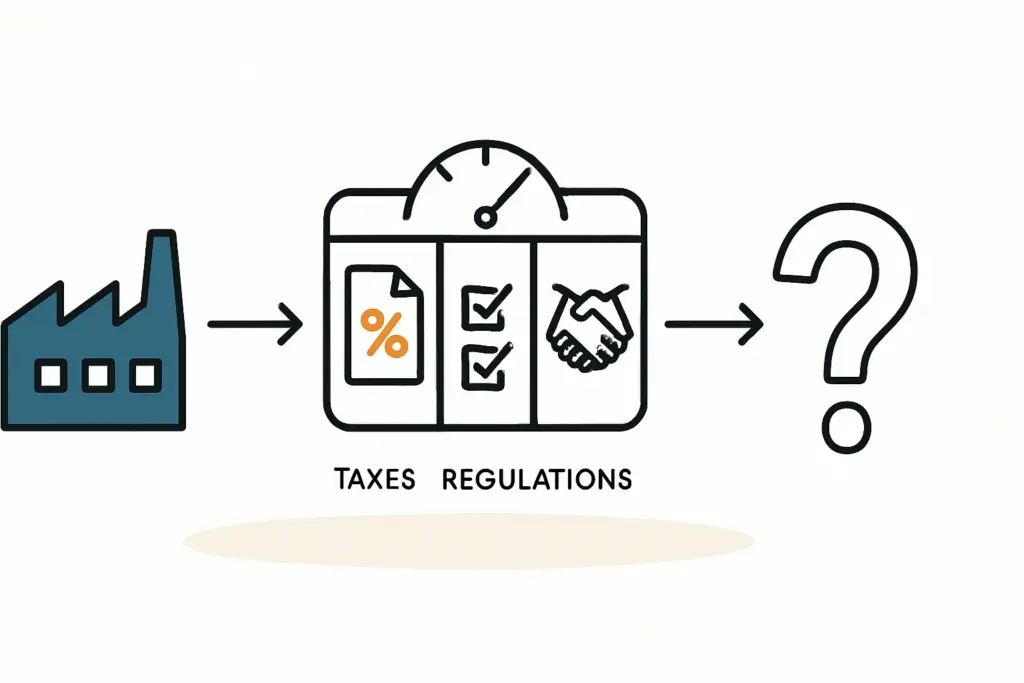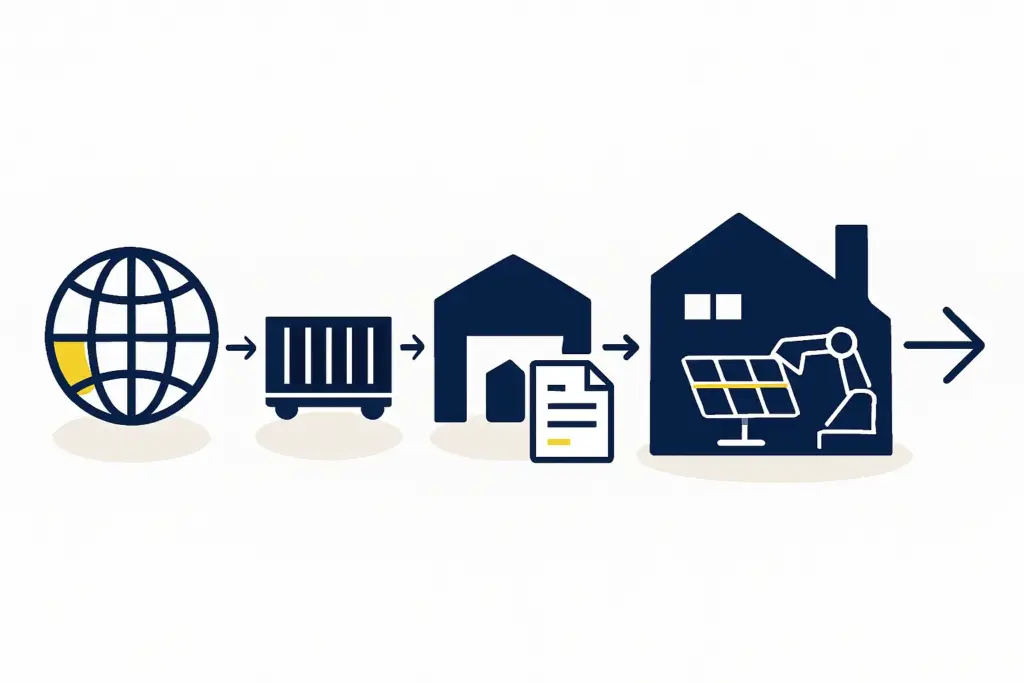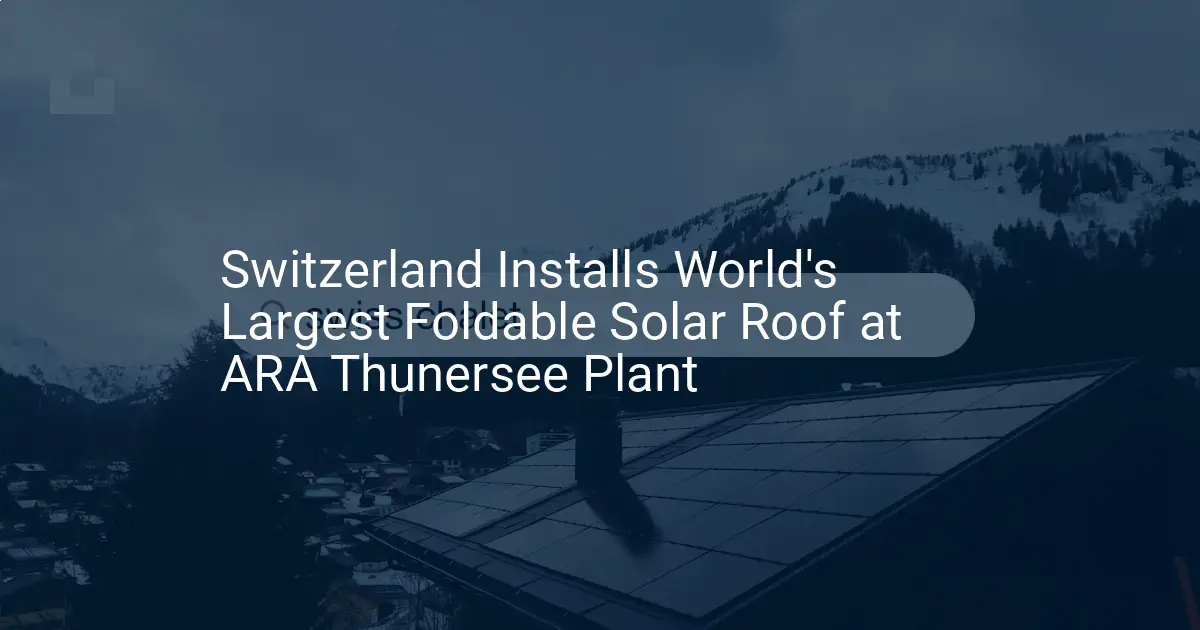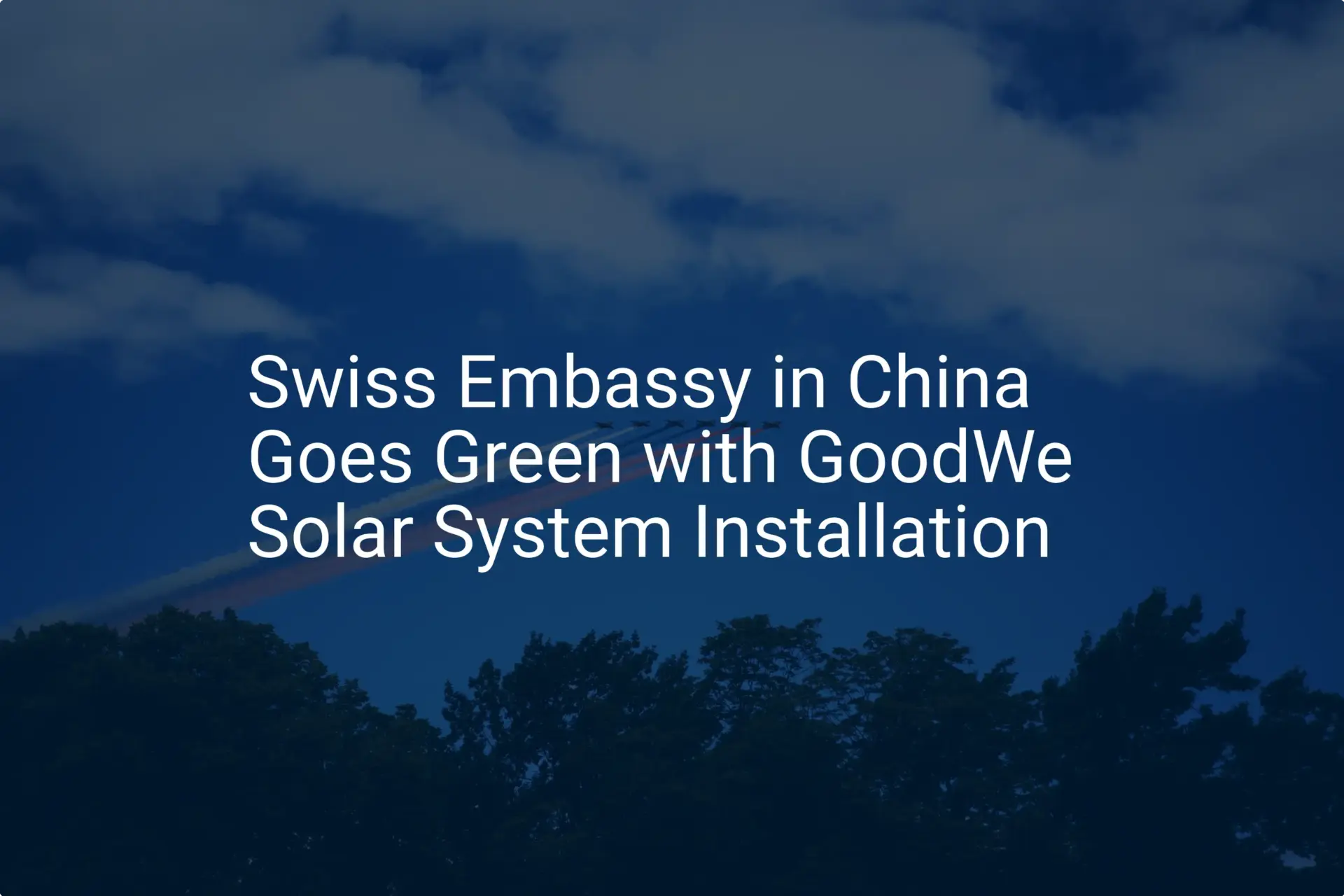Discover comprehensive insights into the statistics, market trends, and growth potential surrounding the solar panel manufacturing industry in Switzerland
- Climate top (n.d.). Sunshine & Daylight Hours in Geneva, Switzerland. Retrieved October 16, 2024, from https://www.climate.top/switzerland/geneva/sunlight/
- Climate top (n.d.). Sunshine & Daylight Hours in Zurich, Switzerland. Retrieved October 16, 2024, from https://www.climate.top/switzerland/zurich/sunlight/
- International Energy Agency (2021). National Survey Report of PV Power Applications in Switzerland. Retrieved October 16, 2024, from https://iea-pvps.org/wp-content/uploads/2023/02/IEA-PVPS-National-Survey-Report-Switzerland-2021.pdf
- Global Petrol Prices (2024). Switzerland electricity prices. Retrieved October 16, 2024, from https://www.globalpetrolprices.com/Switzerland/electricity_prices/
- Swiss info (2022, July 24). Swiss electricity providers face shocking challenges. Retrieved October 16, 2024, from https://www.swissinfo.ch/eng/business/swiss-electricity-providers-face-shocking-challenges/47763460
- Axpo (2022, August 12). Why the grid ‘pulse’ is 50 hertz. Retrieved October 16, 2024, from https://www.axpo.com/ch/en/knowledge/magazine/energy-market/why-the-grid–pulse–is-50-hertz.html
- International Renewable Energy Agency (2024). Renewable energy statistics 2024. Retrieved October 16, 2024, from https://www.irena.org/-/media/Files/IRENA/Agency/Publication/2024/Jul/IRENA_Renewable_Energy_Statistics_2024.pdf
- Solar & storage xtra (2024, September 9) Switzerland Energy Week: The Swiss surge in PV energy. Retrieved October 16, 2024, from https://solarstoragextra.com/switzerland-energy-week-the-swiss-surge-in-pv-energy/
- Axpo (2022, May 10). Four reasons why hydropower is having a hard time in Switzerland. Retrieved October 16, 2024, from https://www.axpo.com/be/en/about-us/magazine.detail.html/magazine/renewable-energy/four-reasons-why-hydropower-is-having-a-hard-time-in-switzerland.html
- PV magazine (2022, September 23). Swiss grid operators to raise surplus solar tariffs by average of 55% in 2023. Retrieved October 16, 2024, from https://www.pv-magazine.com/2022/09/23/swiss-grid-operators-to-raise-tariffs-for-surplus-solar-by-average-of-55-in-2023/
- Swiss nuclear (n.d.). Swiss nuclear power plants – Economic efficiency. Retrieved October 16, 2024, from https://swissnuclear.ch/en/wirtschaftlichkeit/
- Statista (2024, February). Distribution of electricity generation in Switzerland in 2023, by source. Retrieved October 16, 2024, from https://www.statista.com/statistics/1237616/switzerland-distribution-of-electricity-production-by-source/
- Worldometers (2016). Switzerland Electricity. Retrieved October 16, 2024, from https://www.worldometers.info/electricity/switzerland-electricity/
- Ewz (n.d.). Energy is scarce – Answers to key questions. Retrieved October 16, 2024, from https://www.ewz.ch/en/about-ewz/newsroom/current-issues/electricity-shortage.html
- PV magazine (2023, June 26). Switzerland becomes gigawatt solar market. Retrieved October 16, 2024, from https://www.pv-magazine.com/2023/06/26/switzerland-becomes-gigawatt-solar-market/
- Statista (2023). Power plants in Switzerland by source. Retrieved October 16, 2024, from https://www.statista.com/statistics/1245673/number-of-swiss-power-stations-by-type/
- Swiss info (2024, September 13). Construction starts on first large-scale solar park in Swiss Alps. Retrieved October 16, 2024, from https://www.swissinfo.ch/eng/alpine-environment/construction-starts-on-first-large-scale-solar-park-in-swiss-alps/87531886
- Solar & Storage Live Zurich Swiss (2023). Swiss Solar Market Report. Retrieved October 16, 2024, from https://www.terrapinn-cdn.com/exhibition/solar-storage-live-zurich/Data/swiss-solar-market-report.pdf
- ETH Zurich (2024, January 10). Three strategies to boost green electricity in Switzerland. Retrieved October 16, 2024, from https://ethz.ch/en/news-and-events/eth-news/news/2024/01/three-strategies-to-boost-green-electricity-in-switzerland.html
- Taiyang news (2022, December 1). Switzerland Promising Subsidies For New Solar In 2023 & Beyond. Retrieved October 16, 2024, from https://taiyangnews.info/markets/switzerland-promising-subsidies-for-new-solar-in-2023-beyond
- Enwind (2024, July 12). Photovoltaic solar energy will cover 10% of Switzerland’s electricity needs. Retrieved October 16, 2024, from https://www.evwind.es/2024/07/12/photovoltaic-solar-energy-will-cover-10-of-switzerlands-electricity-needs/99660
- Mordor Intelligence (n.d.). Switzerland Solar Energy Market Size & Share Analysis – Growth Trends & Forecasts (2024 – 2029). Retrieved October 16, 2024, from https://www.mordorintelligence.com/industry-reports/switzerland-solar-energy-market
- Time Camp (n.d.). Average Salary in Switzerland. Retrieved October 16, 2024, from https://www.timecamp.com/average-salary/switzerland/
- Job up (n.d.). solar energy technician salaries Throughout Switzerland. Retrieved October 16, 2024, from https://www.jobup.ch/en/salary-info/?canton=ch&term=solar%20energy%20technician
- Economic Researchs Institute (n.d.). Solar Energy System Installer Salary in Switzerland. Retrieved October 16, 2024, from https://www.erieri.com/salary/job/solar-energy-system-installer/switzerland
- Salary Expert (n.d.). Solar Engineer salary. October 16, 2024, from https://www.salaryexpert.com/salary/job/solar-engineer/switzerland
- Worldometers (n.d.). Switzerland population. Retrieved October 16, 2024, from https://www.worldometers.info/world-population/switzerland-population/
- Real Advisor (n.d.). Commercial properties For Rent in Switzerland. Retrieved October 16, 2024, from https://realadvisor.ch/en/rent/commercial/page-2?east=25.652917495950533&north=61.84175725416994&south=27.266578321010034&west=-22.950598129049467
- Swiss grid (n.d.). Tariffs. Retrieved October 16, 2024, from https://www.swissgrid.ch/en/home/customers/topics/tariffs.html
- Wasser für wasser (n.d.). Switzerland. Retrieved October 16, 2024, from https://wfw.ch/en/water-facts/nachhaltigkeit-von-leitungswasser#/
- Statista (2024, September). Property Insurance – Switzerland. Retrieved October 16, 2024, from https://fr.statista.com/outlook/fmo/insurances/non-life-insurances/property-insurance/switzerland
- Advanced energy technologies (2024, July 24). Energy industry in Switzerland. Retrieved October 16, 2024, from https://aenert.com/countries/europe/energy-industry-in-switzerland/
- Federal Department of Foreign Affairs (2023, February 7). Energy – Facts and Figures. Retrieved October 16, 2024, from https://www.eda.admin.ch/aboutswitzerland/en/home/wirtschaft/energie/energie—fakten-und-zahlen.html
- Wikipedia (n.d.). Energy in Switzerland. Retrieved October 16, 2024, from https://en.wikipedia.org/wiki/Energy_in_Switzerland
- International Energy Agency (2023). Switzerland Energy Policy Review. Retrieved October 16, 2024, from https://iea.blob.core.windows.net/assets/b6451900-e6ef-45a8-922d-117520e09a82/Switzerland2023.pdf
- Renewables now (2022, October 4). Switzerland approves solar obligation for new buildings. Retrieved October 16, 2024, from https://renewablesnow.com/news/switzerland-approves-solar-obligation-for-new-buildings-800008/
- Solarchitecture (2023, June 1). Solar installations and regulatory plans. Retrieved October 16, 2024, from https://solarchitecture.ch/solar-installations-and-regulatory-plans/
- Solar & storage xtra (2024, June 11). Switzerland says “Yes” to secure solar energy supply. Retrieved October 16, 2024, from https://solarstoragextra.com/switzerland-says-yes-to-secure-solar-energy-supply/
- Taiyang news (2023, January 18). Switzerland Introduces New Solar Subsidies Under HEIV. Retrieved October 16, 2024, from https://taiyangnews.info/markets/switzerland-introduces-new-solar-subsidies-under-heiv
- Renewables now (2022, November 25). Switzerland to provide CHF 600m of solar subsidies in 2023. Retrieved October 16, 2024, from https://renewablesnow.com/news/switzerland-to-provide-chf-600m-of-solar-subsidies-in-2023-806125/
- Solar & storage xtra (2024, September 13). Switzerland Energy Week: The Alps’ first large-scale solar park. Retrieved October 16, 2024, from https://solarstoragextra.com/switzerland-energy-week-the-alps-first-large-scale-solar-park/
- Axpo (2021). Axpo and IWB to build Muttsee solar plant; Denner to use the electricity. Retrieved October 16, 2024, from https://www.axpo.com/fi/en/newsroom/media-releases/2021/axpo-and-iwb-to-build-muttsee-solar-plant–denner-to-use-the-ele.html
- News.az (2024, September 11). Switzerland unveils innovative floating solar project in the Alps. Retrieved October 16, 2024, from https://news.az/news/switzerland-unveils-innovative-floating-solar-project-in-the-alps
- PV Magazine (2024, July 24). Switzerland publishes database on alpine PV systems. Retrieved October 16, 2024, from https://www.pv-magazine.com/2024/07/29/switzerland-publishes-database-on-alpine-pv-systems/
- Aeroleads (n.d.). Top solar companies in Switzerland. Retrieved October 16, 2024, from https://aeroleads.com/list/top-solar-companies-in-switzerland
- Primroot (n.d.). Best 7 Swiss Solar Panel Manufacturers in 2024 : A Complete Guide. Retrieved October 16, 2024, from https://primroot.com/swiss-solar-panel-manufacturers/





